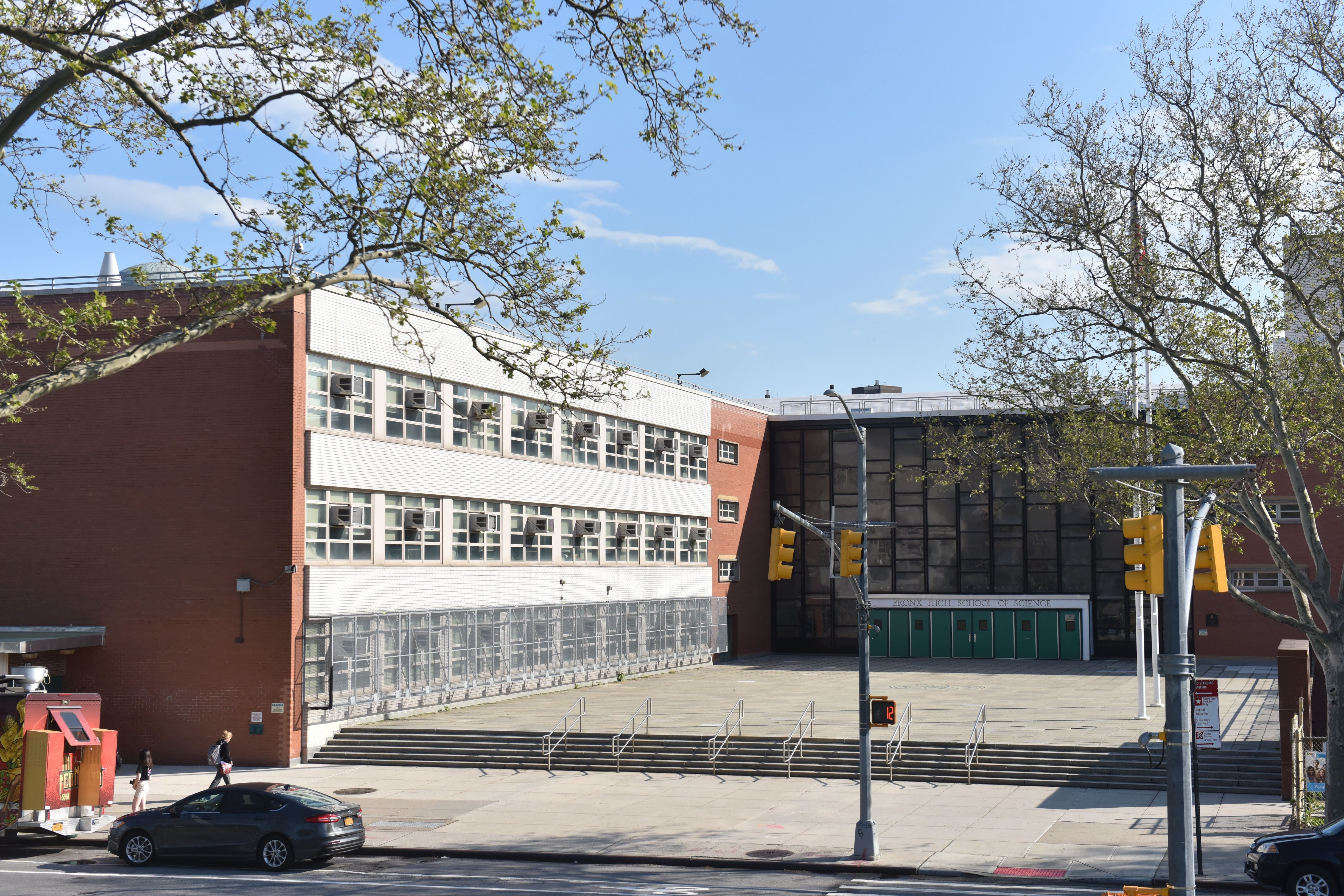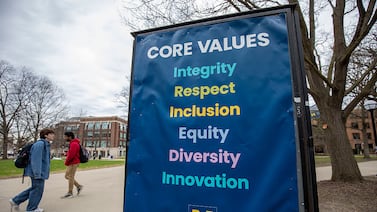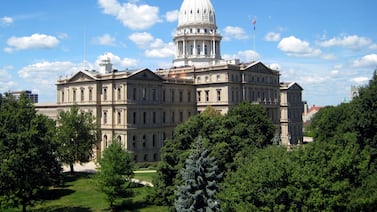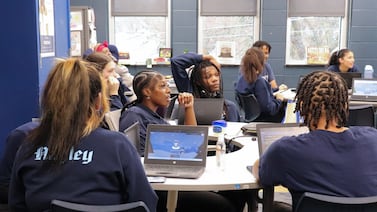The number of Black and Latino students admitted to the city’s vaunted specialized high schools dipped this year, a blow to Mayor Bill de Blasio’s long-running and largely unsuccessful goal of making the schools more reflective of New York City’s diversity.
Black and Latino students, who make up almost 70% of the city school system, received 9% of offers for the 2021-22 school year. That is down from 11% the year before, according to education department data released Thursday.
Schools Chancellor Meisha Porter held up the results as another reminder that state law requiring an entrance exam as the sole basis of admissions — the Specialized High School Admissions Test, or SHSAT — should be repealed and replaced with a “more equitable” process.
“I know from my 21 years as an educator that far more students could thrive in our Specialized High Schools, if only given the chance,” Porter said in a statement. “Instead, the continued use of the Specialized High School Admissions Test will produce the same unacceptable results over and over again, and it’s far past the time for our students to be fairly represented in these schools.”
Just 3.6% of offers went to Black students, while 5.4% went to Latino students. Last school year, Black and Latino students received 4.5% and 6.6% of offers, respectively.
Only one Black student was admitted to Staten Island Tech’s incoming freshman class.
Almost 54% of offers went to Asian students and just under 28% went to white students. White students make about 15% of the school system, while 16% of all students identify as Asian.
Eight of the city’s specialized high schools — including Stuyvesant, Bronx High School of Science, and Brooklyn Tech — require a top score on the SHSAT for admission. Many opponents blame the test for the schools remaining largely white and Asian. The schools are considered some of the most prestigious in the country, but studies have shown that students with similar qualifications who attend other high schools earn comparable SAT scores and college offers.
De Blasio has spent much of his two terms proposing reforms that have done little to budge the needle when it comes to admitting more Black and Latino students. The coronavirus pandemic may have further contributed to the lack of representation in this year’s class. Amid an overall drop in the number of test-takers this year by about 4,000, to roughly 23,500 students, the vast majority of the decline was among Black and Latino students.
Education officials suggested that fewer students took the test because city schools lost roughly 43,000 children across the board, as families left the public school system at higher than usual rates.
The dip in test-takers, however, also likely resulted from major changes in how the test was administered during the pandemic. First, it was given in January, months later than is typical. To account for social distancing, it was offered at every middle school as opposed to a handful of sites, as usual — causing big logistical challenges for principals, whose school buildings were shuttered at the time amid a spike in COVID-19 rates. They had to administer the high-stakes test in person to eighth graders, who were learning exclusively from home this winter.
Black students made up an even smaller share of test-takers this year, down roughly 1,200 students, or almost 1.5 percentage points to 18.5% of all test-takers. The share of Latino students who took the test dipped even further, and was down by almost two percentage points, to 22.8%. Roughly 1,500 fewer Latino students sat for the test.
Meanwhile, even though Asian students had the highest rates of fully remote learning, the share of Asian test-takers grew by about three percentage points, to 34.7%. The overall number of Asian test-takers dropped by about 560 students, but as in past years, Asian students remained most likely to take the SHSAT. Nearly 430 fewer white students sat for the exam this year, but the share of white test-takers grew slightly, from just over 17% to 18.4%.
While advocates for more diverse schools had hoped that the city would press pause on administering the test during the pandemic, de Blasio did not directly answer whether he made any attempts to lobby the state to waive the admissions requirement this year. Other cities have pivoted in response to COVID-19. In Boston, for example, the city decided it wasn’t safe to administer an in-person test for admission to its prestigious exam schools, and will temporarily admit students based on a combination of a student’s grade point average and their ZIP code.
To diversify the schools, de Blasio proposed three years ago to scrap the exam and admit the city’s top middle school students based on a combination of their state test scores and report card grades. But the test is required under state law, and de Blasio unsuccessfully lobbied state lawmakers to consider changes. The movement to keep the test is backed by wealthy benefactors, who also called for creating more specialized schools and expanding subsidized test preparation.
De Blasio also faced fierce pushback from some white and Asian families, who felt the changes would unfairly undercut their chances for admission. The mayor has admitted that he failed to engage enough on his proposed changes with Asian New Yorkers, many of whom are recent immigrants who see the schools as a way for their children to get into a top college.
Last year, buoyed by a national reckoning over racial discrimination, some state lawmakers took a different approach by proposing to repeal the 1971 law associated with the test, instead of changing it as de Blasio had proposed. The original law, which took away the city’s power to change admissions, was passed just as the chancellor at the time announced an investigation into whether the test was discriminatory against Black and Latino students. That repeal bill has not gained momentum.
The de Blasio administration has also tried to change the makeup of the schools by tweaks to the Discovery program, a summer course that offers admission to students who just miss the cutoff score on the SHSAT. Education officials said that 800 seats will be set aside for incoming ninth graders through the program. Discovery has not resulted in notable changes in demographics at the schools, and the program is the subject of a lawsuit that is still winding its way through the courts.
This year’s admissions season has been especially stressful for families and students, and the release of admissions offers on Thursday only continued that trend. The education department said that some students would have to wait another day to learn whether they had been accepted to the specialized schools, due to a technical glitch with Microsoft that made it impossible to open emails containing admissions offers. Students who didn’t apply to the specialized high schools should expect to receive their offers in late May.
Also on Thursday, a separate snafu led to some students’ middle school acceptances being posted to the city’s online portal. The information was then quickly removed. The education department said the offers are valid but that they were accidentally posted early — middle school admissions results aren’t expected until early May. Only about .3% of students were able to access their offers before they were removed, according to an education department official.






